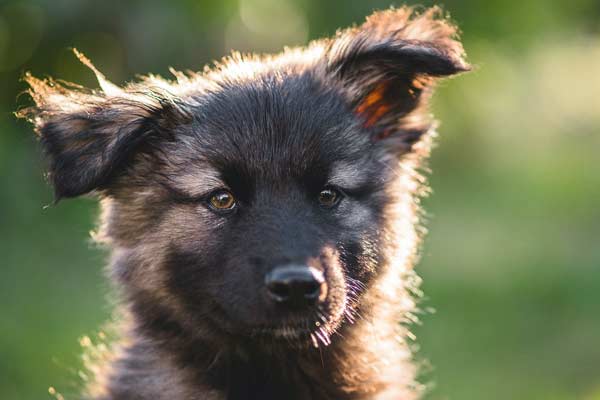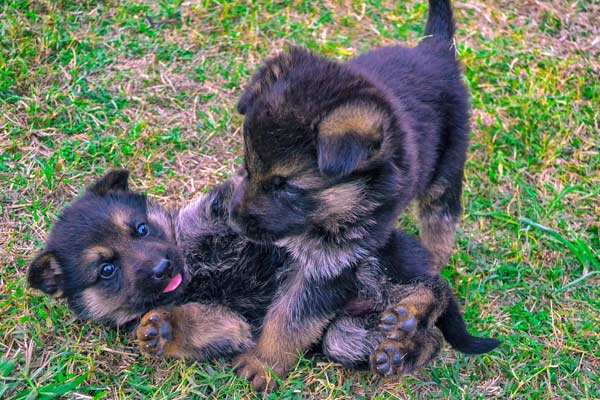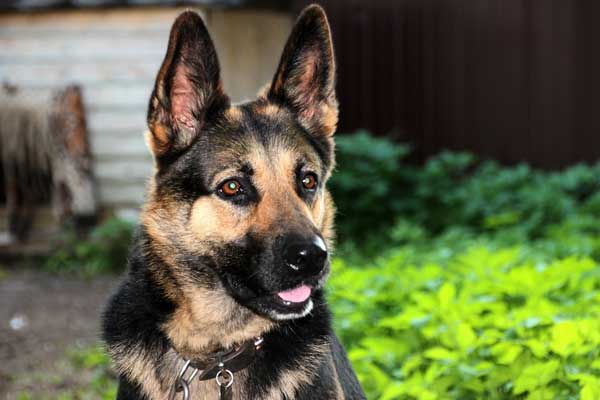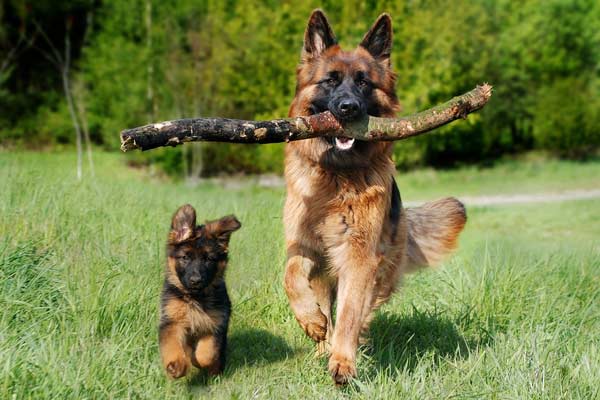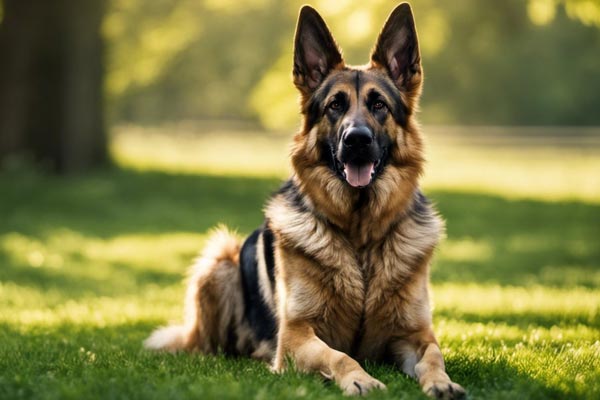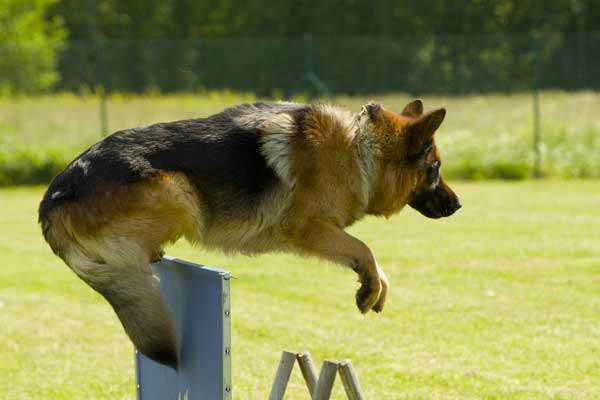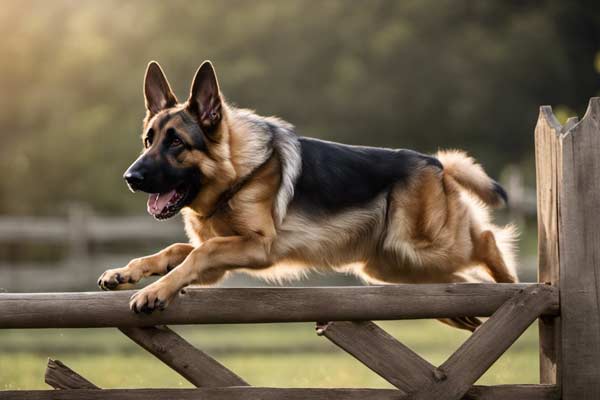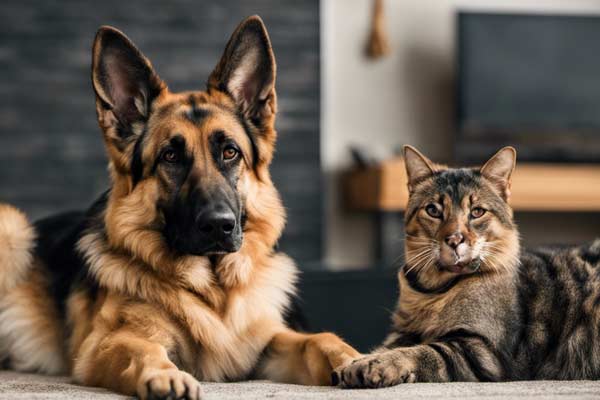How Many Puppies Can A German Shepherd Have? Unbelievable Answer Will Shock You!
How Many Puppies Can A German Shepherd Have?
A German Shepherd’s litter size can vary greatly depending on many factors, such as the age and health of the female, as well as her genetics, size, and overall physical condition. Generally speaking, a single litter could yield between 1 and 15 puppies.
The American Kennel Club says that the average number of puppies in a German Shepherd litter is six to eight. If the mother has more than one litter, she might have more puppies.
German Shepherd’s first and second litter sizes can vary greatly, ranging between 3 to 8 puppies, depending on the health and genetics of the mother dog.
How Long Does a German Shepherd’s Gestation Period Last?
A German Shepherd’s pregnancy period usually lasts around two months or 63 days. During this time, the mother dog will grow and gain weight as her puppies develop.
During the final week of gestation, signs may appear that labor is imminent, including restlessness, panting, and increased milk production.
How Frequently Can a German Shepherd Give Birth within One Year?
A German Shepherd Dog can give birth to an impressive number of litters over their lifetime. On average, a GSD can be expected to have 2 litters of puppies in a single year, with the potential to produce 14 litters by the time they reach 8 years old.
Uncover the Factors that Impact Your German Shepherd Litters
Factors that Impact Your German Shepherd Litters include:
1. Age is essential in a German Shepherd’s litter size, as older dogs may experience more difficulties during delivery. Therefore, monitoring your dog’s age and health throughout life is crucial to ensure the best possible outcome for its pregnancy.
2. To increase the chances of a successful delivery, providing your German Shepherd with a balanced diet is essential. A healthy and nutritious diet will help optimize your dog’s health to prepare for pregnancy and labor.
3. Genetics also play a role in the size of a German Shepherd’s litter. Make sure you research your pup’s parents before getting them! Knowing their genetic background can help predict possible health risks and litter size.
4. Lastly, ensuring that the environment you provide your German Shepherd is suitable for raising a litter of puppies is essential. Providing an enriched environment with plenty of space will help guarantee successful delivery and healthy pups!
Can you Increase the German Shepherd Size of a Litter?
1. Nutrition is an essential factor in the size of a German Shepherd litter. It will help if you maintain a rich protein diet throughout the year to increase the chances of having more puppies.
2. Poor diets and being overweight can lead to smaller litter, so ensuring your dog is well-nourished and has access to the right food is essential.
3. Exercise is also essential when trying to increase litter size. Regular exercise will help keep your dog in shape and promote healthy physical development.
4. Genetics may also affect the size of a German Shepherd’s litter, so it is crucial to consider the dog’s lineage when looking for a bigger one.
5. Supplementation can help increase litter size. Supplements such as folic acid and omega-3 fatty acids can improve your dog’s fertility and lead to larger litters.
Best Age to Breed a German Shepherd
When choosing the best age to breed a German Shepherd, it’s essential to be aware of some critical considerations. While males of this breed can begin breeding at 12 months old, female GSDs should wait until they have had three heat cycles before being mated. This typically occurs when they are between 18 and 24 months old.
For the health and safety of your German Shepherd, it is best to wait until at least 2 years of age before breeding them. This helps ensure that both genders have reached full physical maturity. Also, female GSD should never be bred after 8 years old, ideally by 5 or 6.
German Shepherd Whelping Supply Checklist
Before the arrival of your German Shepherd’s puppies, it is crucial to make sure you have all the necessary supplies on hand to ensure a safe and stress-free delivery process.
Here is a checklist of items to help ensure you have everything you need:
1. Newspaper is an excellent option for lining the whelping box as it makes cleanup more manageable and efficient, with garbage bags on hand to dispose of the soiled paper.
2. Non-skid bath mats and dry, clean towels are essential for keeping puppies and their mother clean during delivery.
3. Paper towels, a thermometer, sterilized scissors, unwaxed dental floss, iodine, and a heat lamp should also be on hand to aid with cleaning and monitoring the puppies during delivery.
4. A baby scale (in ounces), a bulb syringe, honey or light corn syrup, and your veterinarian’s phone number are also necessary in case of any issues that arise during the birthing process.
5. Having all these items on hand will help ensure a safe and hassle-free delivery for your German Shepherd.
6. Ensures your puppy’s birth is as safe and stress-free as possible.
Tips on caring for a large litter of Newborn puppies
1. Ensure that the mother dog is healthy and well-nourished. Check with a veterinarian to ensure she is up-to-date on vaccinations, parasite prevention, and other medical care needed before the puppies are born.
2. Provide a comfortable and secure place for the puppies to be born and stay during their first weeks. A large cardboard box with blankets or towels is ideal, as this will protect them from drafts and keep them warm.
3. Keep the puppies quiet and free of loud noises and distractions. This will help the mother dog bond with her puppies and provide a peaceful environment for them to grow and develop.
4. Monitor the puppies for signs of illness or distress. Check their eyes, ears, and nasal discharge daily for any changes that may indicate problems. Keep an eye out for anything unusual, and if you notice something, don’t hesitate to contact your veterinarian immediately.
5. Make sure the puppies are getting adequate nutrition from their mother. Examine each puppy to ensure they are gaining weight, and supplement with formula or milk replacer if needed.
6. Supervise interactions between humans and puppies to ensure they are safe from potential harm. Limit contact with strangers and family members who do not live in the home to reduce the risk of infection or disease transmission.
7. Clean up after the puppies regularly to keep the environment clean and free of disease. Disinfect all surfaces, bowls, and toys with a commercial disinfectant to help prevent the spread of infection or illness.
8. Socialize your puppies early on by regularly interacting with humans and other animals in controlled settings. This will help them develop trust and comfort when around other people and animals, which is essential for their long-term health and happiness.
9. Talk to your veterinarian about the best food and vitamins to give the puppies as they grow to ensure they get the proper nutrition. Feed them several times daily, slowly transitioning from milk replacer or formula to solid foods as they age.
10. Spay or neuter the puppies as soon as your veterinarian recommends to help reduce their risk of certain types of cancer and other health issues later in life. This will also help control pet overpopulation and provide all pets with a better quality of life.
Which Dog breed has the highest number of puppies in one litter?
In 2009, an extraordinary Neapolitan Mastiff named Tia made history by setting a Guinness World Record for the largest litter of puppies born in one sitting.
This incredible Neapolitan Mastiff gave birth to an astounding 24 puppies – 15 males and 9 females – a feat that even the most experienced breeders had never seen before. The remarkable number was four times higher than the average litter size for this breed.
This incredible feat of nature puts Neapolitan Mastiffs at the top of the list regarding breeds with the highest number of puppies in one litter.

